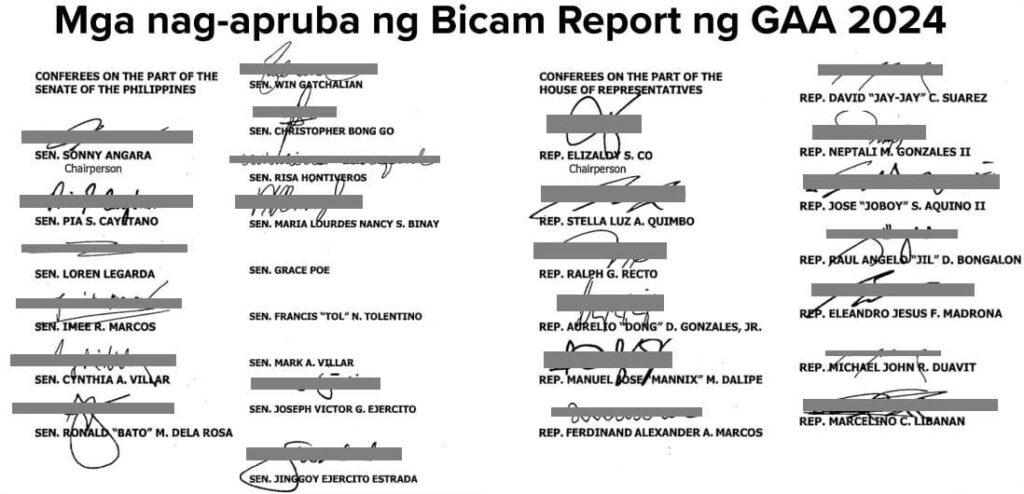Unless lawmakers come to their senses and repeal the Philippine Mining Act of 1995, more than 110-million Filipinos will have to contend with the plunder of the country’s natural resources by an industry that contributes at most 8% to the gross domestic product (GDP) annually at the expense of grave risks to the environment, indigenous communities and future generations.
Both the Chamber of Mines in the Philippines (COMP) and the Philippine Nickel Industry Association (PNIA) have hailed the decision of the Supreme Court (SC), promulgated on Jan. 14, 2025, but released four months later, that junked the 25-year moratorium on mining imposed by Occidental Mindoro and Abra de Ilog town in 2009. The decision, written by Associate Justice Marvic Leonen, chastised the local government units (LGUs) for “exceeding” their authority by imposing a crippling ban on all large-scale exploration, quarrying and mining operations, thus injuring Ramon Ang and his Agusan Petroleum and Mining Corp. (APMC).
Leonen’s argument is that there may be some leeway for LGUs to regulate mining but they are barred from flouting the provisions of Republic Act No. 7942, or the Philippine Mining Act of 1995, or imposing crippling conditions that conceivably were “unreasonable, oppressive and discriminatory” to the interest of Ang and APMC. The same line was invoked in killing mining bans in South Cotabato, Negros Island and presumably the recently-approved ban in Palawan, considered as the country’s last decent ecological showcase. Ang, indeed, is luckier than most Filipinos for he’s back in business in Occidental Mindoro as the ruling in GR 248932 restores his control over 46,050 hectares in Baco, San Teodoro and Puerto Galera in Oriental Mindoro and in Mamburao City and Abra de Ilog in Occidental Mindoro.
How lucky can Ang get? He has SMC’s fiefdom in Bulakan, Bulacan pampered with tax perks, his own airport called the New Manila International Airport (NMIA) that’s supposed to have four runways, a race track for Ferraris, silos and warehouses and an expressway that guarantees quick transport to Manila. He happens to also control the Ninoy Aquino International Airport (NAIA), which imposed huge parking fees for travelers and their kin. He has another airstrip at Bugsuk Island for his private jets and those of his fellow plutocrats. Ang surely is smarter than others since he has the Nationalist People’s Coalition (NPC) as his battering ram.
For its part, the PNIA hailed the SC decision as a check on the predilection of environmentally conscious LGUs to rein in mining companies even as they technically must receive 40% of all the taxes paid by extractive ventures. Under RA 7942, government partners with mining companies via the so-called financial or technical assistance agreements (FTAAs). Does RA 7942 provide any significant role for affected communities? Aside from the controversial free and informed prior consent (FPIC) that has been regularly shunned by Chinese companies and disregarded by the National Commission on Indigenous Peoples (NCIP), affected communities exercise no oversight and are largely left by the wayside once mining ventures start operating full-blast.
On the other hand, PNIA and its backers are sanguine over the prospects of mining for nickel, which saw its price sink to $4 a pound in 2008 from $14 a year before. This forced the original operator of the Dinapigue mine in Isabela, Platinum Group Metals Corp. (PGMC), to shutter operations, laying off 400 workers. PGMC, supposed to be the second biggest nickel miner in tandem with Global Ferronickel Holdings, Inc. (FNI), signed a deal with Geograce Resources Philippines, Inc. (Geograce) to operate and develop a portion of the PGMC’s mining project in Isabela, which turned out to be only 45 hectares out of the total 2,391 hectares.
By 2015, Nickel Asia Corp, of the Zamoras bought the Dinapigue venture from NiHAO Mineral Resources, Int’l., which took over the mining tenement and exported saprolite and limonite ores, for only P720-million. Nickel Asia also took over three of NiHAO’s mining claims– Mina Tierra Gracia Inc. with 5,081.6408 hectares of mineral property in Bototal and Iba, Zambales, Bountiful Geomines Inc. with 1,944 hectares in Opol and Manticao, Misamis Oriental and Masbate 13 Philippines Inc. with 4,136.7538 hectares in Milagros and Mandaon, Masbate. Now that the people of Occidental Mindoro and Dinapigue, Isabela are up in arms over the SC decision and the failure of government to control the intense exploitation of a chunk of the Sierra Madre, they might as well coalesce and campaign hard to resist the expected intense exploitation of the country’s mineral resources. LGUs can learn a thing or two from some Asian countries. To check illegal logging, trucks were not allowed into the forests but prescribed that only elephants can transport logs. Primary forests were thus saved from denudation.
The fact that only 774,501.76 hectares on the country’s total land area of 30-million hectares, or 2.58%, will be an incentive for miners to call for intense mining exploration. The global nickel market, COMP claims, will rebound and demand will rise by 82% five years hence and 149% by 2040. Last year, insisted industry insiders, nickel brought in P56.7 billion. Interestingly, Indonesia, the world’s largest nickel producer, imports 97% of its nickel ores from the Philippines. Yet, by gross value added (GVA), the Mines and Geosciences Bureau (MGB) of the Department of Environment and Natural Resources (DENR) reported, the mining industry contributed only P126.4 billion in 2021 or 0.65% of the gross domestic product (GDP), P153.1-billion the following year or 0.69% of the GDP. In 2023, its contribution to GDP grew by a tad to P170.3 billion or 0.70%. These figures belie the claim that the country’s economy would sink unless miners are allowed to exploit the country’s mineral resources like butchers in a pig pen, never mind that the SC institutionalized the “writ of kalikasan” to defend the Philippine environment from despoliation. Did the SC succeed in its issued writ of kalikasan covering Manila Bay? Like bit dogs, Metro Manila officials hollered. Now, Manila Bay is congested with reclamation projects. #




